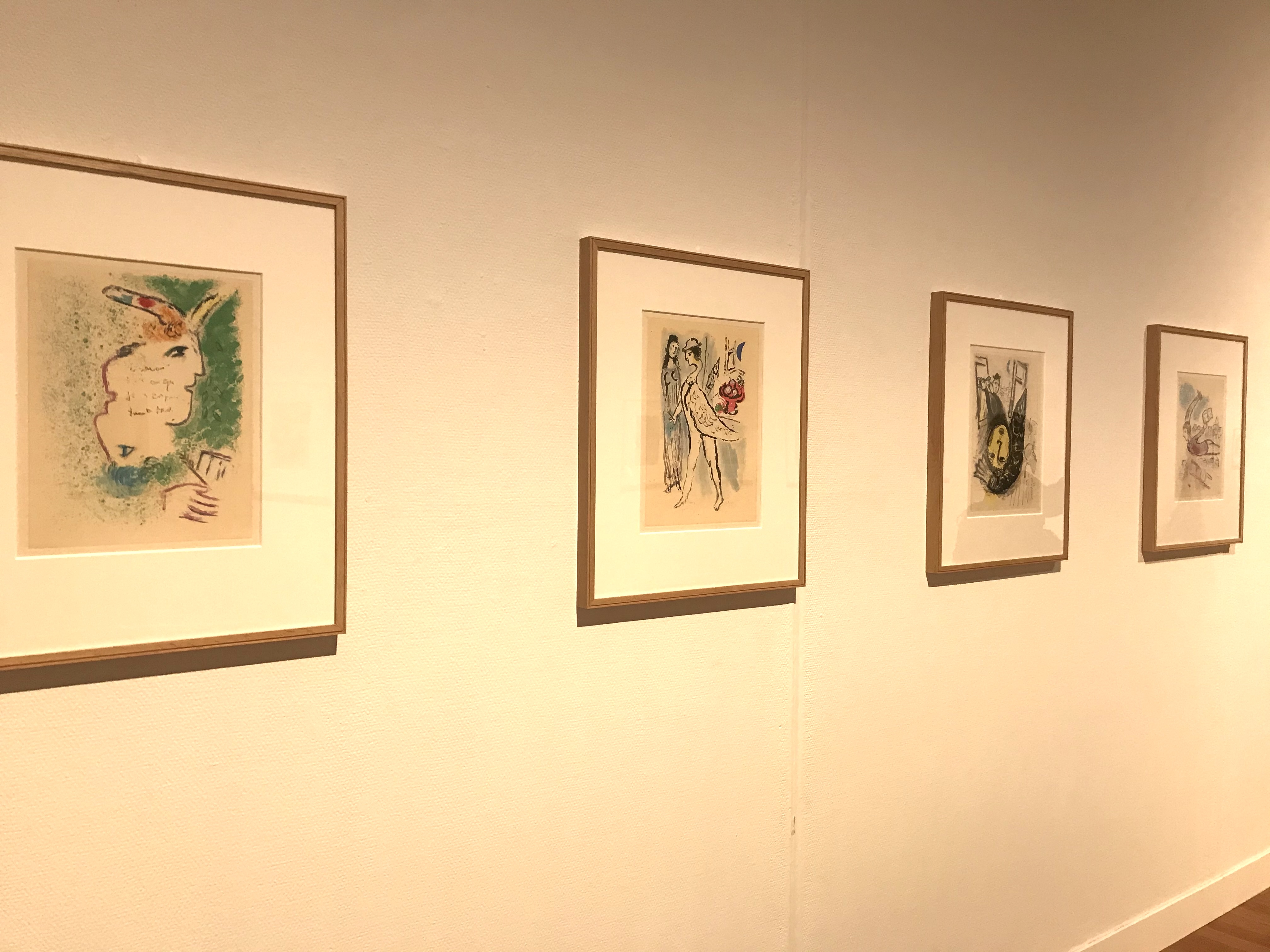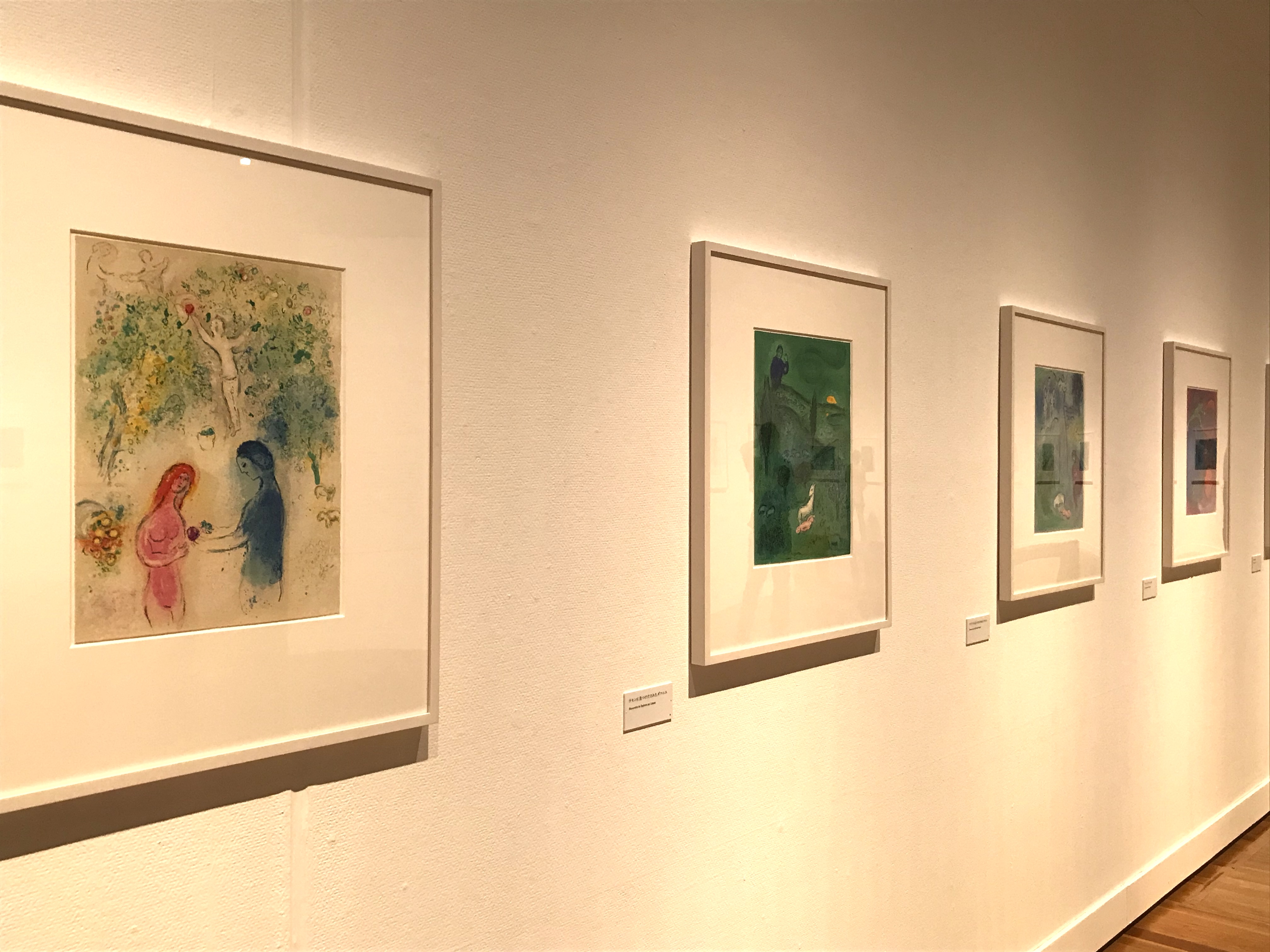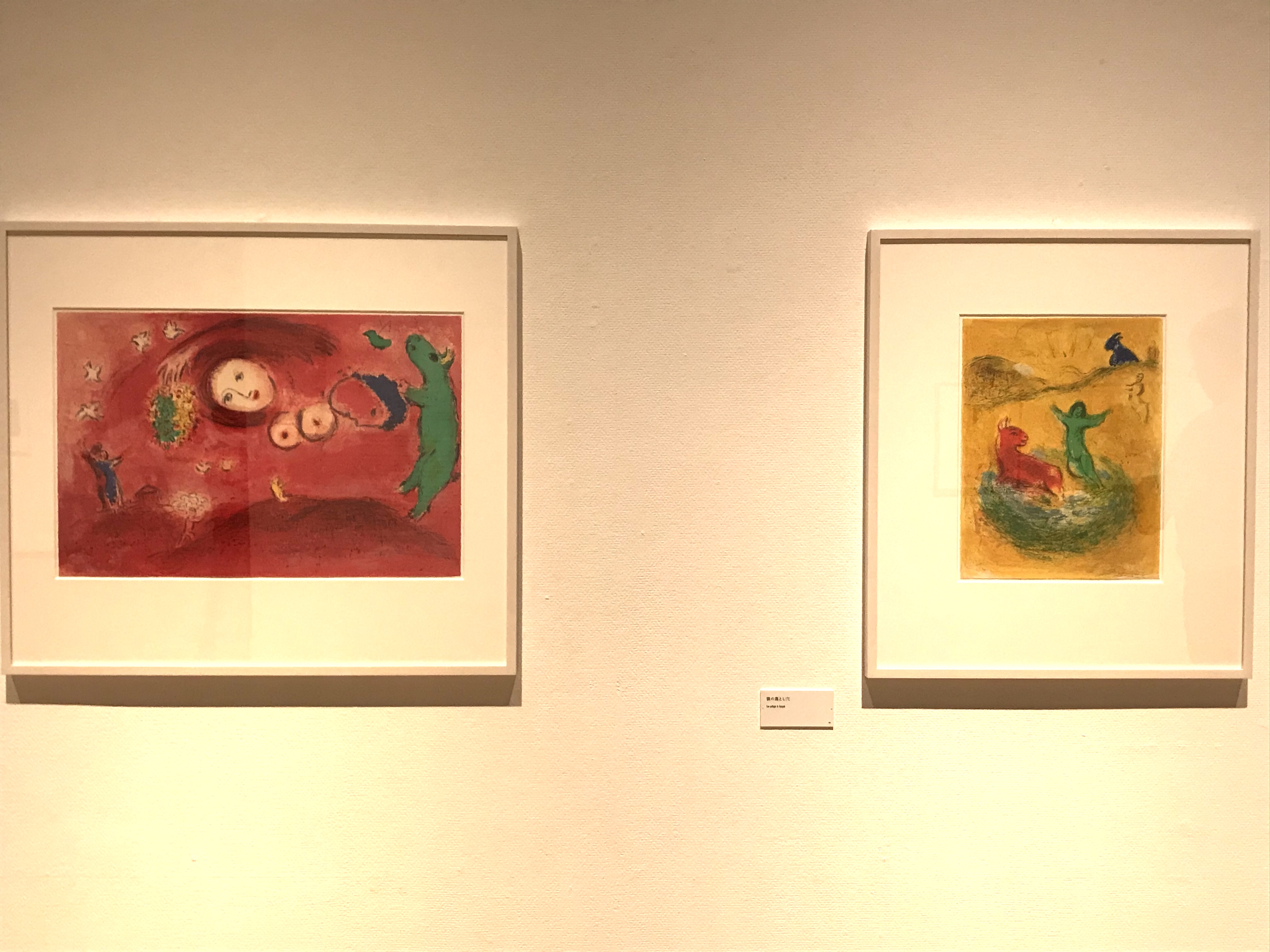POETIC LIGHT IN THE PRINTS OF MARC CHAGALL
HAPPENINGText: Alma Reyes
In 1958, Chagall ventured on his first multicolored copperplate engravings with aquatint technique, as seen in “De Mauvais Sujets” (Bad Elements). The illustrated book consists of ten original engravings based on the text by French writer Jean Paulhan (1884-1968). Paulhan’s close acquaintance with intellectuals in the art and literature circle formed his friendship with Chagall. The story of the book centers on the main character’s introspection of his adolescence and decision to become a writer while struggling to find a “good element” to work on. One of the famous plates from the collection, “Sans Titre” (Plate no. 2) illustrates the artist’s dreamy world of exhilaration and flight in the subject’s gesture of flying in the air with open arms, and holding a pen and notebook to symbolize the freedom of self-expression.

Marc Chagall, De Mauvais Sujets, 1958, showing Plates 5, 4, 3, 2
Perhaps, the highlight of the exhibition belongs to the marvelous print collection “Daphnis et Chloé” (Daphnis and Chloé), 1961. In 1952, Greek publisher Tériade (Stratis Eleftheriades) approached Chagall to create a series of lithographs based on Greek poet Longus’ novel. Coincidentally, Chagall had just traveled to Greece with his second wife Valentina Brodsky. He was mesmerized by the glimmering light of the Aegean Sea and the island’s beauty.

Marc Chagall, Daphnis et Chloé, 1961, showing Frontispiece, 1961 (left)
The story of Daphnis et Chloé (which was also a ballet production devised by Maurice Ravel and involved Chagall’s creations for new sets and costumes), narrates the romance between two orphans who were raised on the Greek Isle of Lesbos. Amidst the struggle of confirming their love for each other, both are abducted (Chloé by suitors, and Daphnis by pirates), but reunite and finally marry in the end. Chagall was enchanted by the amorous tale and spent years developing his first gouache and pastel drawings, and perfecting the color impressions. He finally completed 42 lithographs that were printed between 1957 and 1960. They have been regarded as the artist’s most phenomenal graphic work that truly embodies his sublime nature towards the articulation of love, romance and pain, enhanced by his unique imaginary vision and radiant animation. Chagall wrote, “I have always painted pictures where human love floods my colors.”

Marc Chagall, Daphnis et Chloé, 1961, Printemps au Pré, 1961 (left); Le piège à loups ,1961 (right)
“Daphne et Chloé, Frontispiece” 1961, designed as the cover page, reveals the two romantic heroes — Chloé on the left rendered in saturated fuchsia, contrasted with Daphnis on the right in deep blue hue. They are engrossed in emotional awakening under a wash of lime green trees, and spatters of reds, yellows and blues. In fiery passion red, Daphne et “Chloé, Printemps au Pré” (Spring in the Meadow), 1961, shows the lovers floating in a starry-eyed landscape, accented by striking female breasts and soaring birds as symbols of their mutual desire. The green goat represents the pastoral setting of the story.
Read more ...





